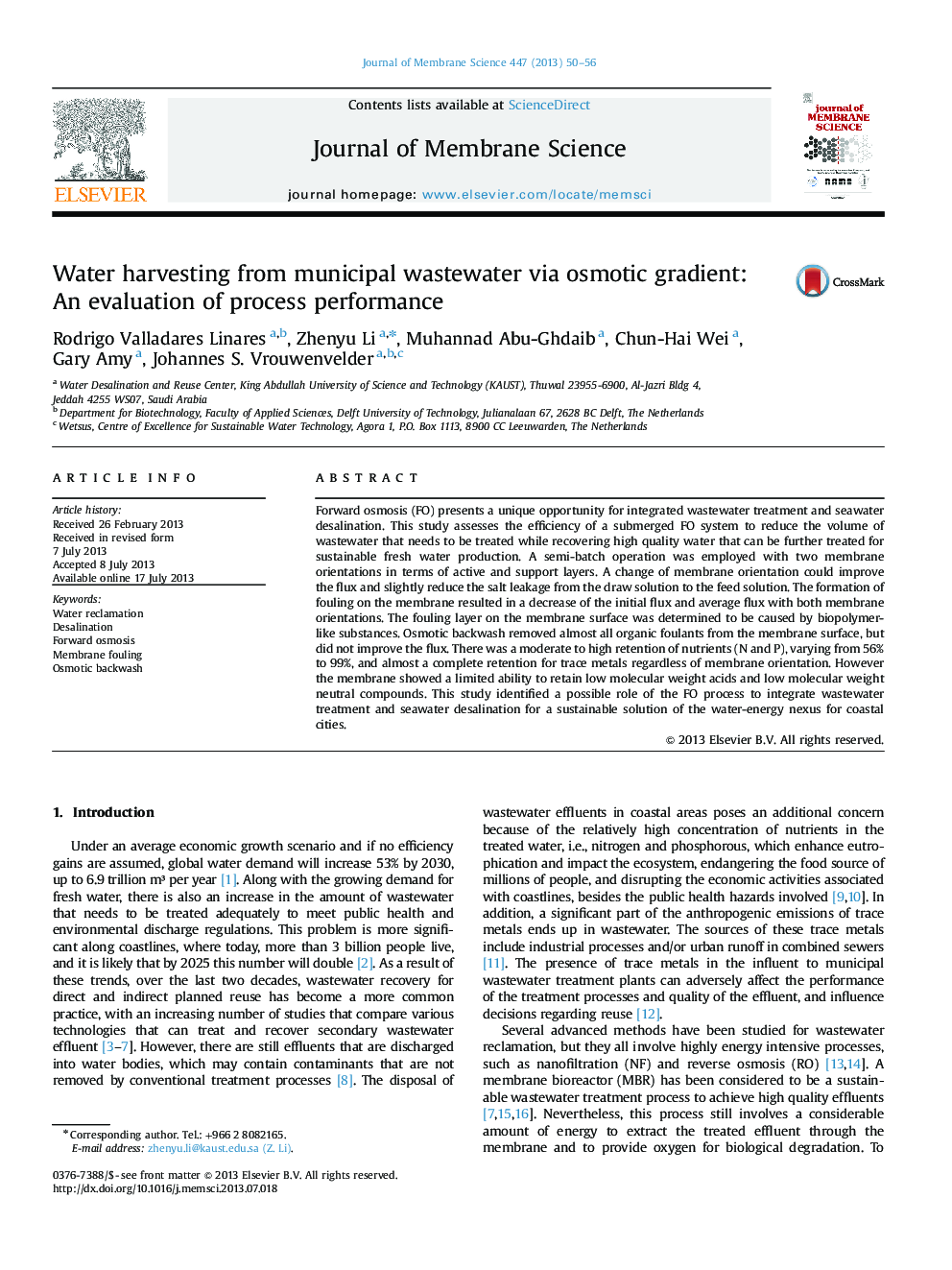| کد مقاله | کد نشریه | سال انتشار | مقاله انگلیسی | نسخه تمام متن |
|---|---|---|---|---|
| 634210 | 1456052 | 2013 | 7 صفحه PDF | دانلود رایگان |

• We report the application of FO to integrate water treatment and desalination.
• Biopolymer-like substances play a crucial role in the membrane fouling.
• Osmotic backwash may not provide an expected performance for flux recovery in FO.
• FO is a reliable barrier to reject most contaminants and salt.
• FO is a promising strategy for a sustainable solution of the water-energy nexus.
Forward osmosis (FO) presents a unique opportunity for integrated wastewater treatment and seawater desalination. This study assesses the efficiency of a submerged FO system to reduce the volume of wastewater that needs to be treated while recovering high quality water that can be further treated for sustainable fresh water production. A semi-batch operation was employed with two membrane orientations in terms of active and support layers. A change of membrane orientation could improve the flux and slightly reduce the salt leakage from the draw solution to the feed solution. The formation of fouling on the membrane resulted in a decrease of the initial flux and average flux with both membrane orientations. The fouling layer on the membrane surface was determined to be caused by biopolymer-like substances. Osmotic backwash removed almost all organic foulants from the membrane surface, but did not improve the flux. There was a moderate to high retention of nutrients (N and P), varying from 56% to 99%, and almost a complete retention for trace metals regardless of membrane orientation. However the membrane showed a limited ability to retain low molecular weight acids and low molecular weight neutral compounds. This study identified a possible role of the FO process to integrate wastewater treatment and seawater desalination for a sustainable solution of the water-energy nexus for coastal cities.
Figure optionsDownload high-quality image (222 K)Download as PowerPoint slide
Journal: Journal of Membrane Science - Volume 447, 15 November 2013, Pages 50–56